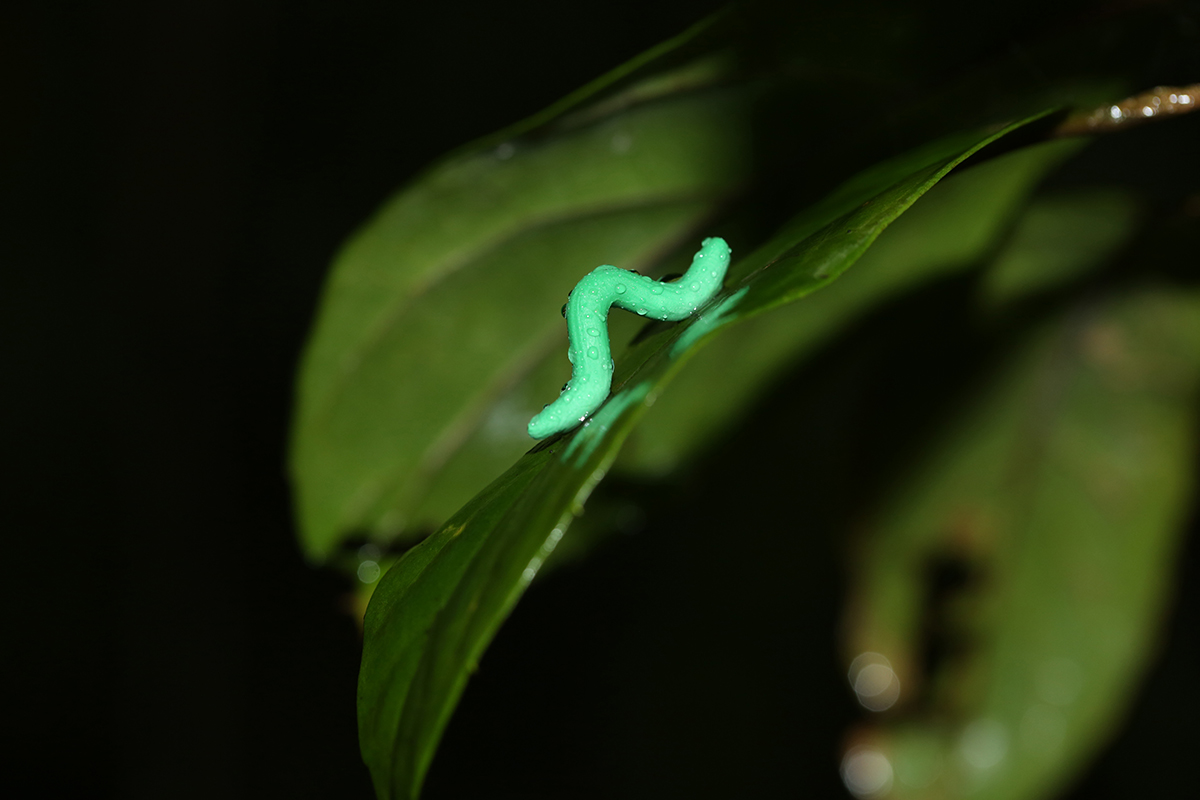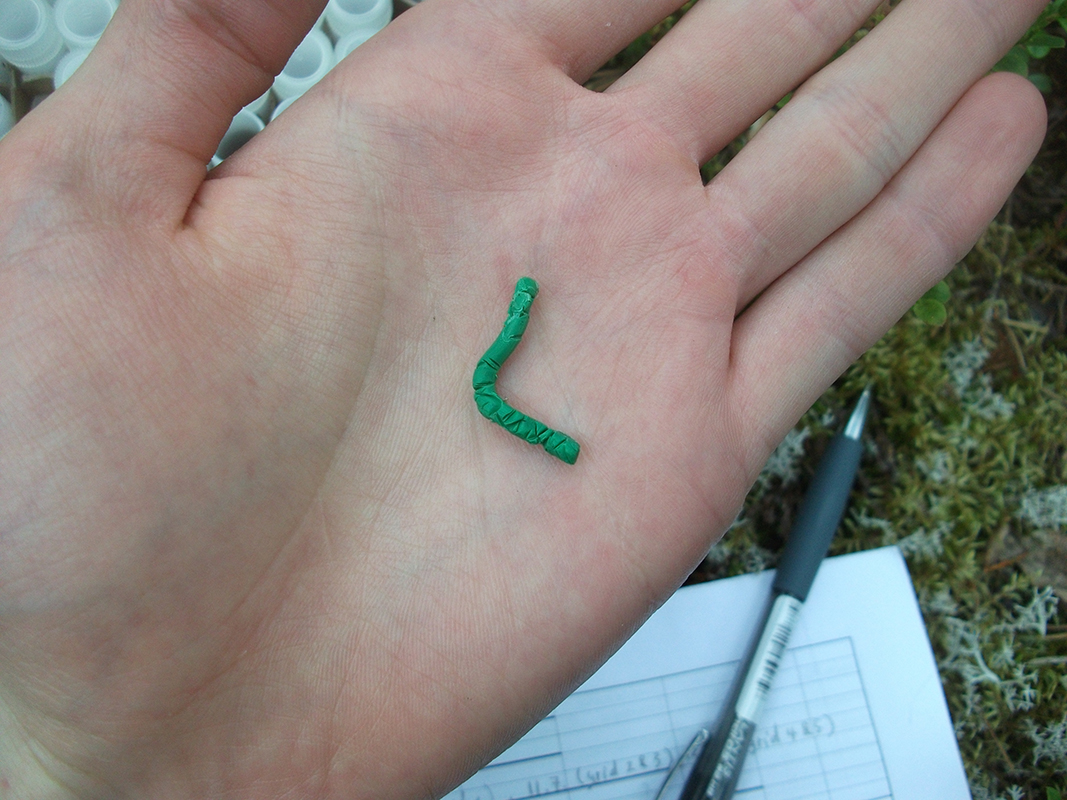Why Are Thousands of Clay Caterpillars Swarming the Globe?

Scientific discovery takes patience, determination, focus and perseverance. And sometimes, it also takes 2,879 bright-green, Plasticine caterpillars.
An international team of researchers attached thousands of diminutive clay caterpillars to plants in 31 sites across six continents, from the Arctic Circle to Australia. The faux caterpillars were designed to tempt insect-eating predators in a study of global feeding patterns.
After the scientists assessed their caterpillar "casualties" at locations in both hemispheres, an intriguing pattern emerged: Even when a caterpillar's a dummy, it stands a much higher chance of being eaten if it's at a lower elevation or closer to the equator. The researchers were even able to tell by the marks left in the soft clay if the predator was an insect, bird or mammal. [No Creepy Crawlies Here: Gallery of the Cutest Bugs]
It's widely recognized that biodiversity is greater in ecosystems near the equator, but scientists in the new research wondered how that might affect predation peril, compared with other ecosystems where biodiversity is lower. So, the study authors turned to tiny artificial caterpillars for answers.
The caterpillars were squeezed from a tool resembling a garlic press, study lead author Tomas Roslin, a senior researcher with the Department of Agricultural Sciences at the University of Helsinki in Finland, told Live Science in an email.
A total of 40 scientists from 21 countries — equipped with Plasticine "inchworms" in protective tubes and glue to attach them to plants — placed the fakes in position for periods of four to 18 days, checking in to see if the caterpillars showed signs of being attacked.
Sculpting caterpillars to entice predators isn't new, but it's a method that researchers typically use for very localized investigations. This new study scaled up that effort significantly, to monitor predation in a wide range of environments, Roslin explained.
Sign up for the Live Science daily newsletter now
Get the world’s most fascinating discoveries delivered straight to your inbox.

Prior to this study, Roslin had used dummy caterpillars for research in northeast Greenland, but he decided that they didn't work because "no one ever got eaten," he said. Roslin was therefore surprised to hear from a colleague, study co-author Eleanor Slade, a researcher with the Department of Zoology at the University of Oxford in England, that when she used the same type of caterpillar lures in southeast Asia, "essentially everyone got eaten."
"We felt maybe these are the extreme points of a global pattern," Roslin explained.
In the new study, the researchers discovered that the farther their testing sites were from the equator, the lower the chance that a predator would strike; the daily odds of being eaten decreased by nearly 3 percent with every degree of latitude away from the equator, either to the north or to the south, the authors wrote. The findings reveal that more types of species, and more organisms in general, near the equator really do equate to more mouths to feed, the researchers said.
When Roslin saw the data, he was flabbergasted, he told Live Science.
"I simply jumped out of my socks," he said. "There was the pattern — and not vague, but entirely clear!"
But there was another surprise in store for the researchers. A colleague reviewing their study suggested testing to see if the pattern held up across changes in elevation in habitats in addition to across latitudes, Roslin said.
Sure enough, the same pattern emerged. The odds of predation dropped by 6.6 percent with every 328-foot (100 meters) increase in elevation, the study authors noted.
"Again, the pattern was very clear once we understood to look for it," Roslin said. "That was probably the most helpful advice ever offered to me during the peer review of any paper."
The findings underscore the importance of large-scale comparative studies investigating how species engage with each other, so that scientists can better understand both the individual and group dynamics of animals in a range of ecosystems, Roslin said.
"In nature, it is really not 'each species on its own,' but everyone affected by a large multitude of friends and foes — their food, their enemies, their diseases and parasites," he explained.
"To understand the larger picture, we need to understand how species interact with each other, rather than stay staring at individual species. Focusing on predator-prey interactions is thus aimed at measuring one interaction type in this bigger whole," Rosin said.
The findings were published online today (May 18) in the journal Science.
Original article on Live Science.

Mindy Weisberger is an editor at Scholastic and a former Live Science channel editor and senior writer. She has reported on general science, covering climate change, paleontology, biology and space. Mindy studied film at Columbia University; prior to Live Science she produced, wrote and directed media for the American Museum of Natural History in New York City. Her videos about dinosaurs, astrophysics, biodiversity and evolution appear in museums and science centers worldwide, earning awards such as the CINE Golden Eagle and the Communicator Award of Excellence. Her writing has also appeared in Scientific American, The Washington Post and How It Works Magazine. Her book "Rise of the Zombie Bugs: The Surprising Science of Parasitic Mind Control" will be published in spring 2025 by Johns Hopkins University Press.









